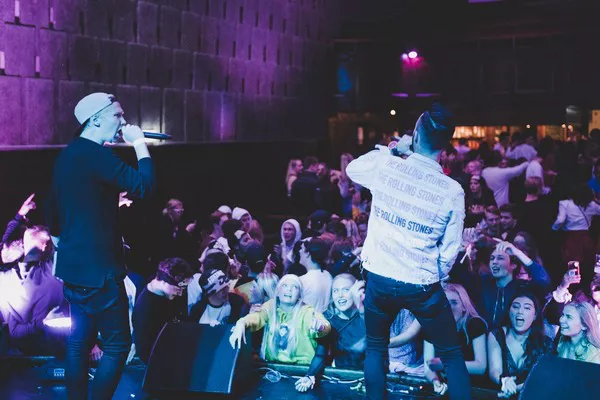As summer bids farewell, the cultural phenomenon that is Barbie continues to shine bright. Warner Bros. hit the jackpot with its blockbuster film “Barbie,” directed by Greta Gerwig and starring Margot Robbie as the iconic Barbie, with Ryan Gosling in the role of her companion, Ken. The film has achieved staggering success, amassing over $1 billion in box office earnings. Yet, it wasn’t just the captivating chemistry between Robbie and Gosling or their impeccable wardrobes that enthralled audiences; it was Gosling’s infectious tune, “I’m Just Ken,” that truly stole the spotlight.
In a stroke of marketing brilliance, the film studio tantalized viewers by releasing a teaser of the music video featuring Gosling’s vocals before the movie’s premiere on July 21. Soon after, Ken’s musical debut skyrocketed onto the Billboard charts, leaving fans clamoring for more.
By the time “Barbie” graced the silver screen, the song had evolved into a cultural sensation, centered around the concept of “Kenergy,” first coined by Gosling in a 2022 interview. Men online swiftly embraced this term, recognizing it as a symbol of healthier masculinity.
However, the backstory of Gosling’s stellar performance as Ken goes beyond the glitz and glamour.
The Making of Gosling as Ken
Crafted and produced by Mark Ronson and Andrew Wyatt of Miike Snow (the co-composers behind Lady Gaga’s Oscar-winning hit, “Shallow”), “I’m Just Ken” was designed to showcase Gosling’s musical talent. Yet, according to Wyatt, perfecting Ken’s shining moment was no small feat.
“The effort expended in the months leading up to the final mix of the film’s ‘locked’ edit was nothing short of extraordinary,” Wyatt said.
Ronson shared similar sentiments in an interview, revealing that Gosling had a mere three hours to record the vocals before sending the track to Guns N’ Roses guitarist Slash, who agreed to contribute alongside guitarist Wolfgang Van Halen and Foo Fighters drummer Josh Freese.
Wyatt maintains that Gosling was destined for a musical role on the grand stage, as evidenced by his previous chart-topping success with “City of Stars” from the 2016 film “La La Land,” alongside Emma Stone. This track claimed the top spot on the Jazz Digital Song Sales chart for two weeks, according to Billboard, and reached No. 8 on the Hot 100’s Bubbling Under ranking, ultimately winning an Academy Award for Best Original Song.
Gosling’s fearless approach to artistic endeavors is apparent, from his short-lived gothic band era in 2007, where he was the lead singer of Dead Man’s Bones alongside screenwriter Zach Shields, to his early career as a teen star on Disney Channel’s Mickey Mouse Club, performing alongside future stars like Christina Aguilera, Britney Spears, and Justin Timberlake.
A Touch of Freddie Mercury
Gosling’s audacious spirit proved to be the ideal canvas for bringing Ken to life. As Wyatt reveals, it also prompted the writers to draw inspiration from other fearless performers, including the late Queen frontman Freddie Mercury.
“When you’re crafting something that demands unmistakable pomp and bravado, pushing the boundaries to the fullest, the spirit of Freddie Mercury is never far away,” Wyatt explains.
Emulating Mercury can be an intimidating endeavor, as the cast of “Bohemian Rhapsody” acknowledged before. Nonetheless, Gosling’s portrayal of Ken stands as a testament to his impact. Not every pop culture character can initiate a cultural movement.
“I believe ‘Kenergy’ is about asserting your personal space, affirming your right to self-worth within the confines of your own body,” Wyatt opines about Gosling’s portrayal of Ken. “It’s a simple acknowledgment that being yourself is ‘Kenough.'”
The Lasting Influence of ‘Kenergy’
Since watching the film, audiences have found solace in Ken’s journey, using terms like “Kenergy” and “Kenough” to help redefine the spectrum of masculinity.
Nicholas Balaisis, a psychotherapist in Toronto who explored these terms in a Psychology Today article after witnessing Gosling’s performance, notes that “I’m Just Ken” resonates with the ongoing discussions surrounding masculinity in contemporary culture. This resonance is evident in lyrics such as:
Wanna know what it’s like to love, to be the real thing
Is it a crime?
Am I not hot when I’m in my feelings
And is my moment finally here, or am I dreaming?
I’m no dreamer.
“Most men recognize that the traditional models of masculinity are no longer viable or desirable,” Balaisis explains. “Yet, there is no readily available new model to step into.”
This is where Ken takes center stage, according to Sally Spencer-Thomas, a suicide-prevention advocate and co-founder of the campaign Man Therapy. She contends that the dance sequence in the film, choreographed by Jennifer White and Lisa Welham, serves as a thought-provoking exploration of societal norms.
“The choreography acts as a portal to an alternate realm, and the dance transcends mere physical movement; it evolves into an emotional catharsis,” Spencer-Thomas suggests. “The very essence of the dance aims to liberate the Kens from the constricting boundaries of traditional masculinity. It’s a profound notion that these individuals, previously mired in emotional turmoil and stifled by societal expectations, find their liberation through the language of dance.”
Balaisis and Spencer-Thomas argue that the song’s overarching theme is the liberation of self-expression, evident in Gosling’s unabashed performance and the lyrics of the song.
Indeed, Balaisis adds, the capacity to embrace “letting go” may be an unintentional gift bestowed by Wyatt, Ronson, and Gosling upon younger generations of men.
“Men often grapple with significant levels of shame regarding their appearance or fear of judgment and scrutiny for their looks or uniqueness,” Balaisis concludes. “The ability to risk self-expression through fashion or clothing is a sign of inner self-worth, of being ‘Kenough,’ and thus being able to withstand the perceived judgment of others.”


























